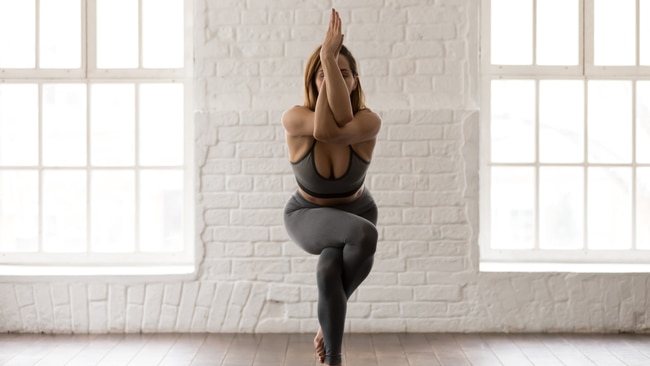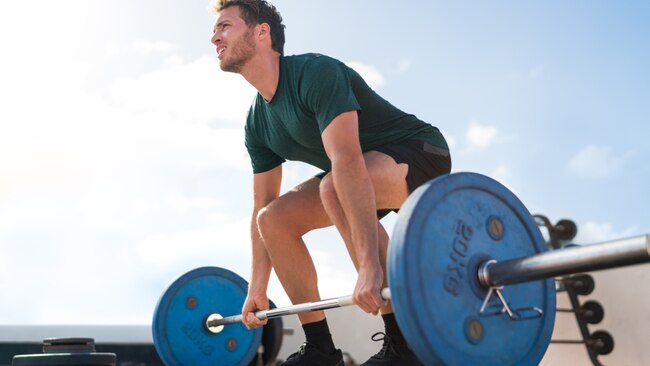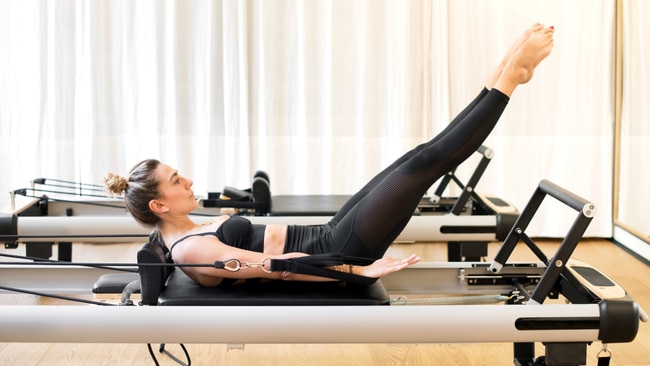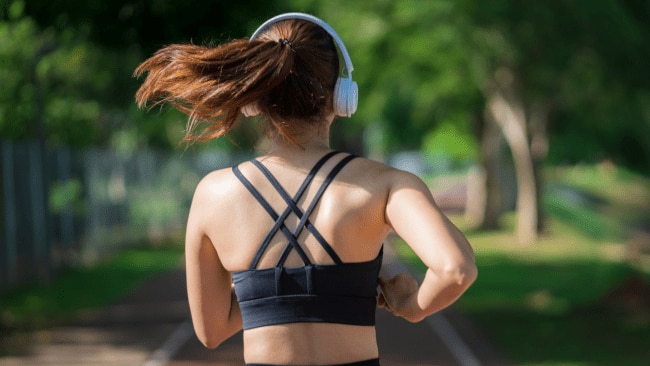5 non-running exercises to make you a better runner
Training shouldn't just be miles on your legs.

Cardio
Don't miss out on the headlines from Cardio. Followed categories will be added to My News.
Personal trainer and national fitness manager from Genesis Health + Fitness, Sam Merza, shares the top 5 exercises that will give you the biggest boost to your running goals, and help prevent injury.5 non-running exercises to make you a better runner
As any runner knows, training is not just miles on your legs. There are plenty of non-running, low impact exercise – including reformer Pilates, mat pilates and yoga - that have so much to offer runners.
While running is an excellent cardiovascular exercise that can help you stay healthy and fit, it is not the only form of exercise that runners should incorporate into their training regimen. In fact, by including non-running exercises, you can reduce the risk of injury when you do run.
Like what you see? Sign up to our bodyandsoul.com.au newsletter for more stories like this.
Running is a high-impact activity that can put a lot of stress on your joints, especially if you're running on hard surfaces or running long distances. Incorporating strength training exercises into your routine can help build muscle and improve joint stability and developing news skills, such as flexibility, balance, and coordination can improve overall running performance.
Additional exercises can also help you to break through plateaus. If you've been running for a while, you may find that your progress has plateaued. Incorporating other exercises can help break through these plateaus by challenging your body in different ways and keeping your workouts interesting.
Give these non-running exercises a go, and watch your overall performance improve in leaps and bounds.

Yoga Pose: eagle pose (Garudasana)
This pose focuses on strength, flexibility, endurance, stabilisation and concentration which are all fantastic for runners. It is also great for easing lower back pain and sciatica while increasing the blood flow to the hip flexors, calves and ankles and opening the shoulders and upper back – all areas that can suffer from tightness in runners. The concentration required is also beneficial for building mental strength that is helpful when the running gets tough.
How to do it:
- Stand tall, legs hip width apart.
- Stabilise the right leg and lift the left leg up high and cross the left thigh over the right thigh. Point your left toes towards the floor and sink your thighs into each other. See if you can wrap your left foot behind your right calf.
- Raise both your arms so they are parallel to the floor, and then wrap your right arm on top of your left arm. Bend your elbows and then begin to raise both hands upwards so that the backs of your palms are facing each other. Press the right hand to the right, and the left hand to the left and see if you can bring your palms to touch. Then lift your elbows up and stretch your fingers to the sky.
- Sink down into your legs, gripping your thighs together. Find stability through pressing your palms together. Hold this pose for 30 seconds, then unwrap yourself and repeat on the other side.

Body weight strength exercise: walking lunges
Walking lunges can be challenging, but if you desire better glutes, leg strength and lower body stability then they are really important and can assist with your running speed and endurance. Each time we challenge the body a single limb at a time it is great for our stabilising muscles, our core strength and body co-ordination and in this case directly benefits your running technique.
How to do it:
- Step forward far enough to feel your weight drop onto that front leg
- Staying in that position drop the rear knee until it gently touches the ground
- At this point both legs should be at right angles from Ankle to knee to hip and your torso should be upright, eyes forward.
- Push down through the front leg to drive your body upright back to a normal standing position
- Step forward with the opposite leg and repeat.

Weighted strength work: deadlifts
If you want to improve just about anything on your body, deadlifts are a great exercise to start with. They are fantastic for the glutes, legs, core muscles and back strength, all of which are key when running. When you begin to get fatigued on a longer run, your body can slump forward, limiting your breath work and compounding the issue of muscular inefficiency. By deadlifting you will improve your posterior chain (muscles down the back of your body) which are going to keep you upright and running with good form for longer. As with any training, keeping proper form will get you results without injury. Remember, this movement is essentially just picking something up off the floor, we do it every day.
How to do it:
- Stand at the barbell, if there are plates on the bar then it should be above the laces of your shoes, feet shoulder width apart.
- Keeping your back straight, squat down to grasp the bar, pushing your hips back as you do. Hands will be just outside your shins
- Using your legs; Push the floor away from you to straighten, keeping the back straight and driving through hips
- Keep your core braced strongly, shoulders pulled back so the bar stays close to your body
- Slowly lower to the ground by pushing your hips back and bending your knees, again keeping your back flat and core tense

Reformer Pilates: side lying straight leg sweeps
Reformer Pilates moves with 1 or both legs in the straps are some of the most popular for a reason – they pack a real punch while working in a low impact manner under load. Side lying leg work is great for improving flexibility, hip stability, quad strength and activation of glute muscles; making it an ideal option for runners looking to lengthen their stride.
How to do it
- Start with a single light spring, such as 1 x Blue spring to secure the carriage
- Lift the headrest up, and lay on your side with both legs bent to 90 degrees comfortably on the carriage
- Place the long strap onto the top foot, over the arch of the foot
- Extend the leg with the strap long and straight, so it hovers over the footbar
- Keeping the leg straight, sweep the leg forward until it is in line with the hip
- Exhale, and extend the leg straight until it hovers over the footbar once more
- Focus on keeping the hips still and square, and moving slowly with control
- Aim to work up to completing the movement for 60 seconds on each side

Mat Pilates: bird dog pose
This mat Pilates move is done in a quadruped (four-point keeling position) and is a great all-rounder. This move is great for improving core stability by engaging the abdominals and back muscles simultaneously. A strong core and good understanding of centre of gravity and balance are beneficial for running on more challenging terrains, and the mental challenge of extending opposite arm to leg is also great for improving concentration.
How to do it:
- Find a spot on the floor with enough room in front and behind to comfortably extend an arm and leg at the same time
- Kneel with your knees hip width apart and hands firmly on the ground about shoulder width apart, while bracing the abdominals
- Reach one arm straight in front while extending the opposite leg behind you, keeping hips squared to the ground
- Hold for a few seconds, and then return to both hands and knees
- Focus on keeping the core engagement throughout the exercise and aim to minimise any shifting of weight
Incorporating the exercises regularly alongside your normal running schedule are a surefire way to improve your speed, strength and help you avoid injury.
Sam Merza is a qualified PT and the National Fitness Manager for Genesis Health + Fitness. You can find more about Sam here.
Originally published as 5 non-running exercises to make you a better runner


